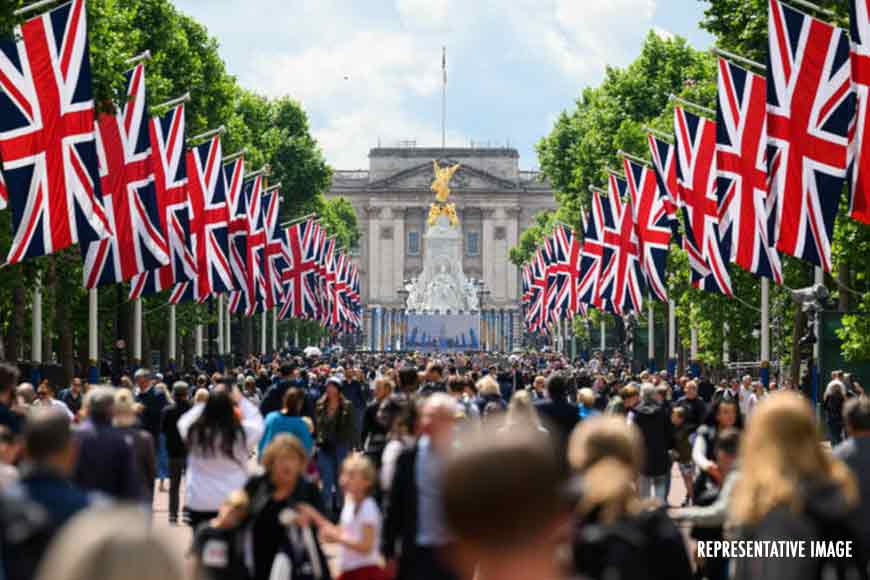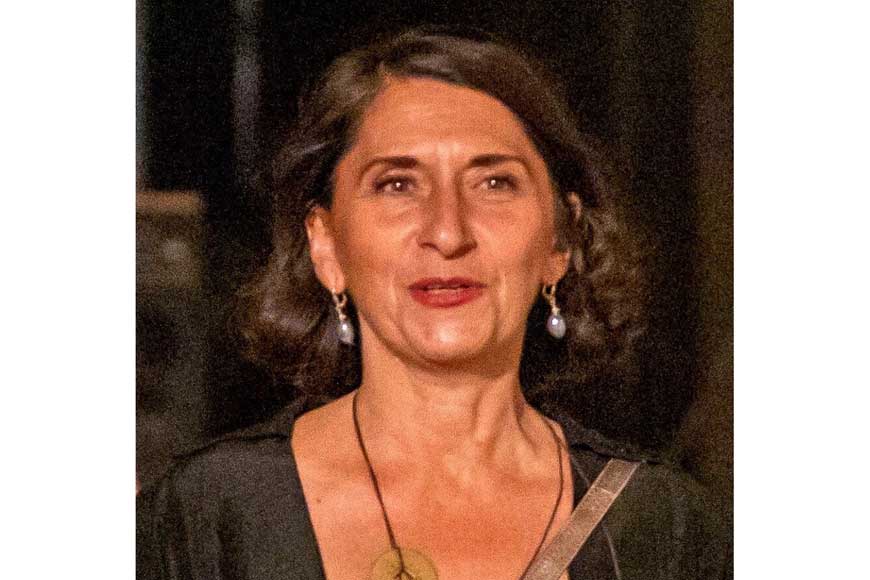Murshidabad silk flags make their mark at Queen Elizabeth's Platinum Jubilee

As Britain celebrates 70 years or the Platinum Jubilee of Queen Elizabeth II's reign, Bengal makes its presence felt… with 200 silk flags made of fabric from Murshidabad, which formed the River of Hope at the Platinum Jubilee Pageant along the Mall in central London. The celebrations began in February and will continue all year. Of course, Bengal and the Britain go back a long way, given that the capital of West Bengal was once the capital of British India, but the fact of Murshidabadi silk adorning a British royal occasion seems particularly ironic, given the role that Murshidabad played in establishing British Raj in India after the Battle of Plassey in 1757.
Silk expert Isabelle Moulin, the French textile artist who launched ‘Silk Me Back’ in 2011, was in West Bengal last month. “I particularly came to check on Murshidabad silk and I have been pressing for Indian silk to take a global route,” she said. “Until now, Indian silk was only catering as a fabric for the people and not much was exported. But I am exploring the potential of weavers in places like Murshidabad for possible collaborations with major silk hubs across the globe. Murshidabad in particular can play a huge role as a changemaker.”
 French textile artist Isabelle Moulin
French textile artist Isabelle Moulin
While the made-in-Murshidabad silk yarns have already reached UK, there is a possibility that Murshidabad superfine mulberry produce will join the global silk network in future. Ananya Bhattacharya, a professor who has been living in London for over a decade says: “We are very proud that Murshidabad silk has been chosen over all other silks in the world to be showcased in the Queen’s 70-year celebrations. Bengalis of England are crazy about this silk from the land of our birth, and we buy it in bulk whenever we go home.”
Also read : Join the Muslin Trail of Murshidabad
Moulin is extremely impressed by the quality and heritage factor of Murshidabad silk, and points to how “Murshidabad’s silk heritage has a potential to partner other major silk producing cities across the globe”. The partnership floated is called SilkCity network that has 12 of the best silk-producing cities from the world over, across eight countries as its members so far. If everything goes well, then Murshidabad silk too can make it to the network, which helps artisans and craftsmen exchange knowledge, build trade relations and understand various craftsmanship techniques.
Murshidabad happens to be the second-largest silk producer in West Bengal, and its location plays an integral role in the silk trade. It is known historically as the prime manufacturer of muslin, Jamdani and Baluchari 'butidar' silk sarees for the princely families of the region. In the 18th century, Nawab of Bengal Murshidquli Khan had shifted his capital from Dhaka to a town on the banks of the Bhagirathi, which was named ‘Murshidabad’ after him. He brought a rich weaving tradition to the city to encourage employment in the area. It flourished in a village called Baluchar in the district, after which a distinct design became famous as the ‘Baluchari' saree, primarily a depiction of mythological themes through designs woven on silk.
As years passed, Murshidabad silk gained in commercial popularity as the British saw it as a business opportunity. They opened the first factory in Cossimbazar, which benefited local silk weavers. Over time, the number increased as the East India Company established its authority in the Bengal Presidency. However, it was later clear that the British made the business centres for their benefit. The raw material was shipped to their home country, putting the weavers at a disadvantage. However, the legacy of Murshidabad silk still thrives.
West Bengal Crafts Council President Shanta Ghosh said: “We shall try our best to help Murshidabad silk take its place at the world forum. Our weavers will contribute new designs and applications for sure.” Whatever the future holds for this exquisite fabric, for now, it has left an imprint on the skies of Bengal’s erstwhile conquerors










